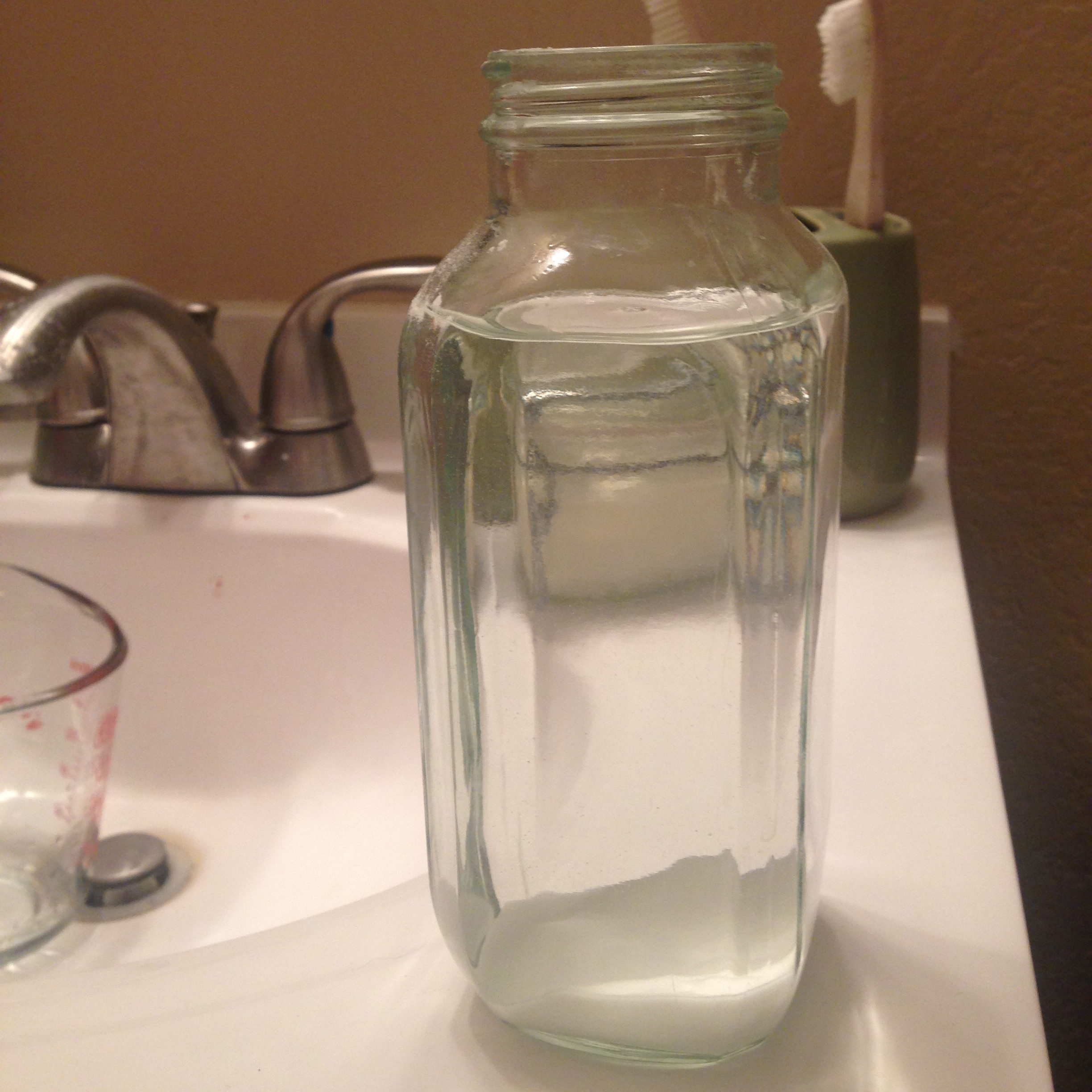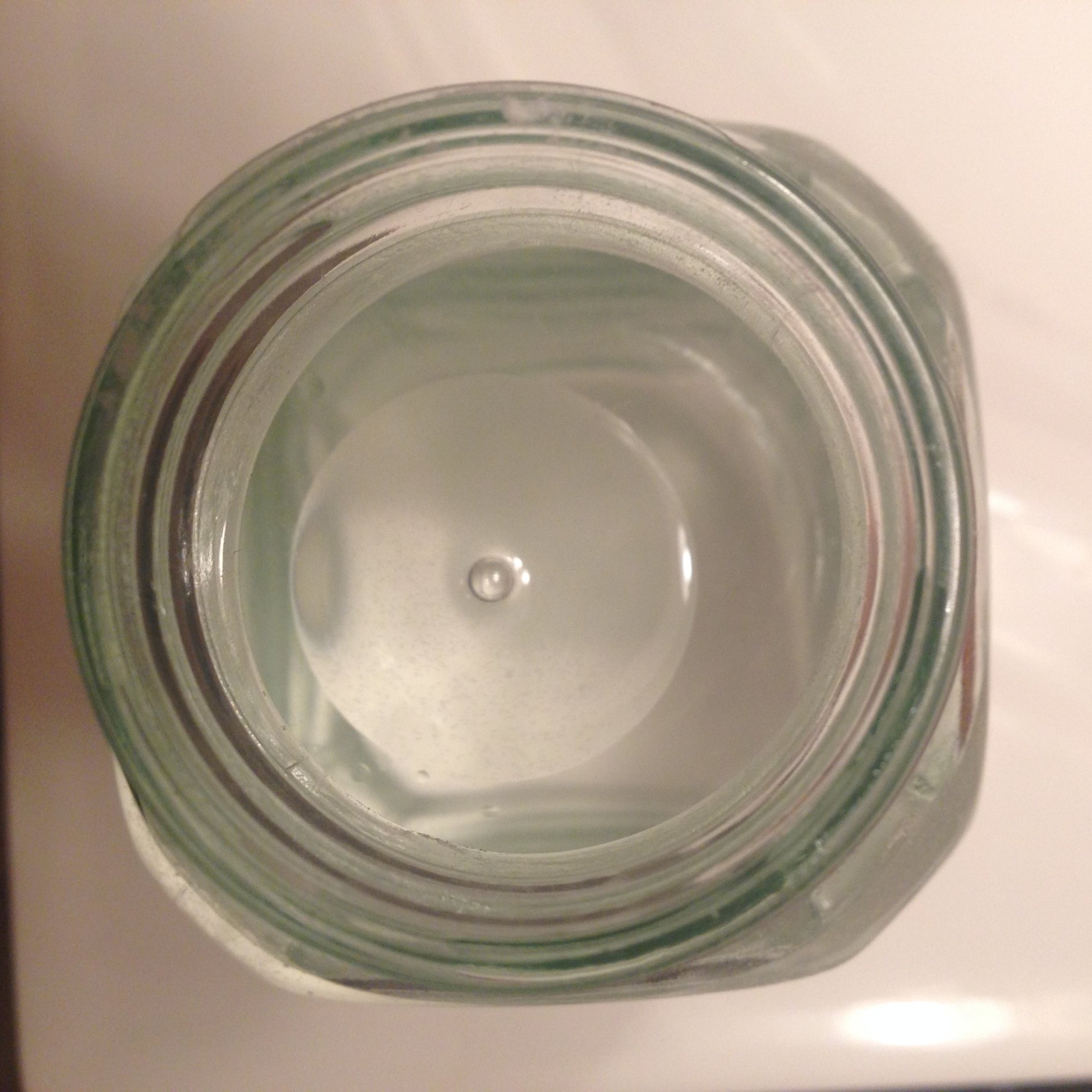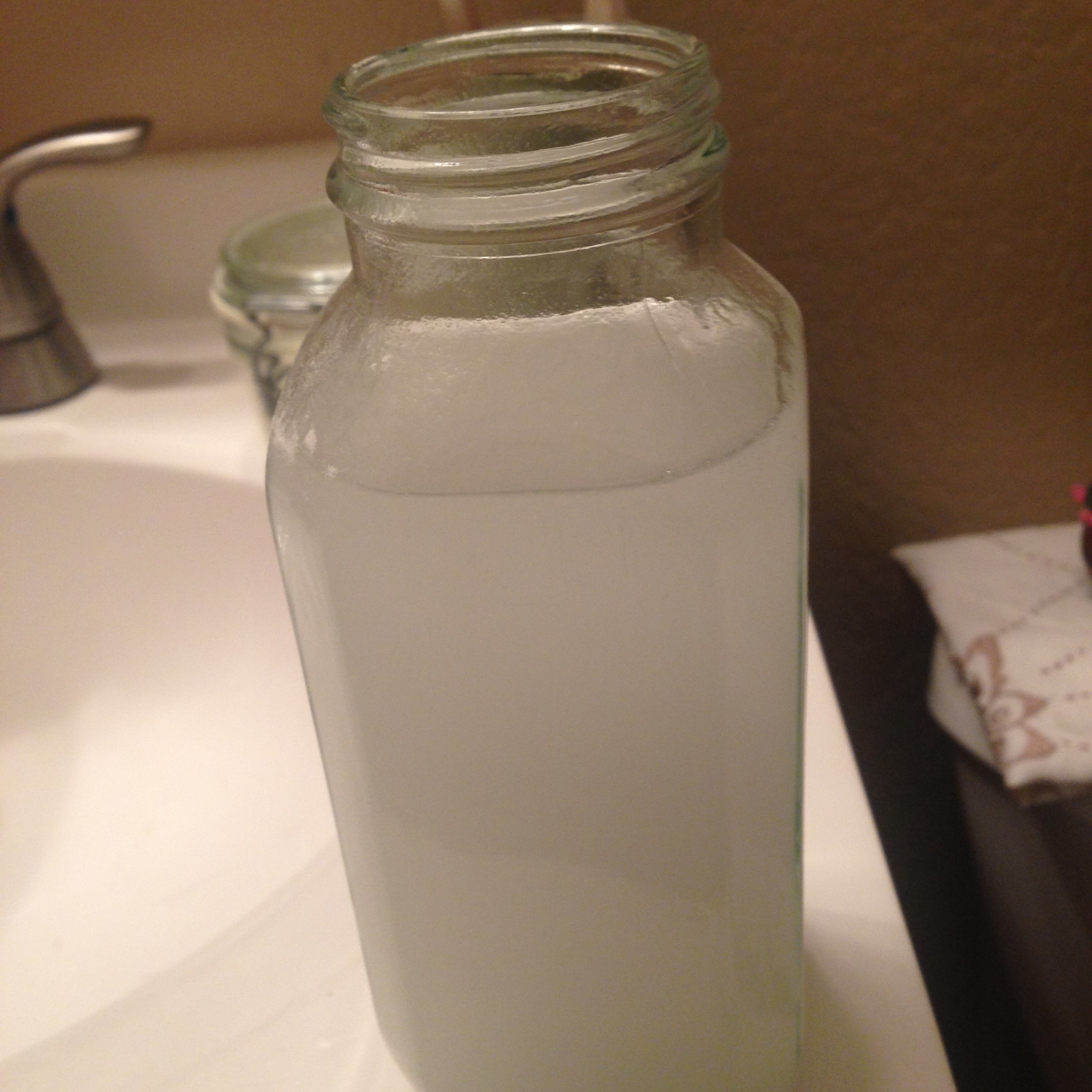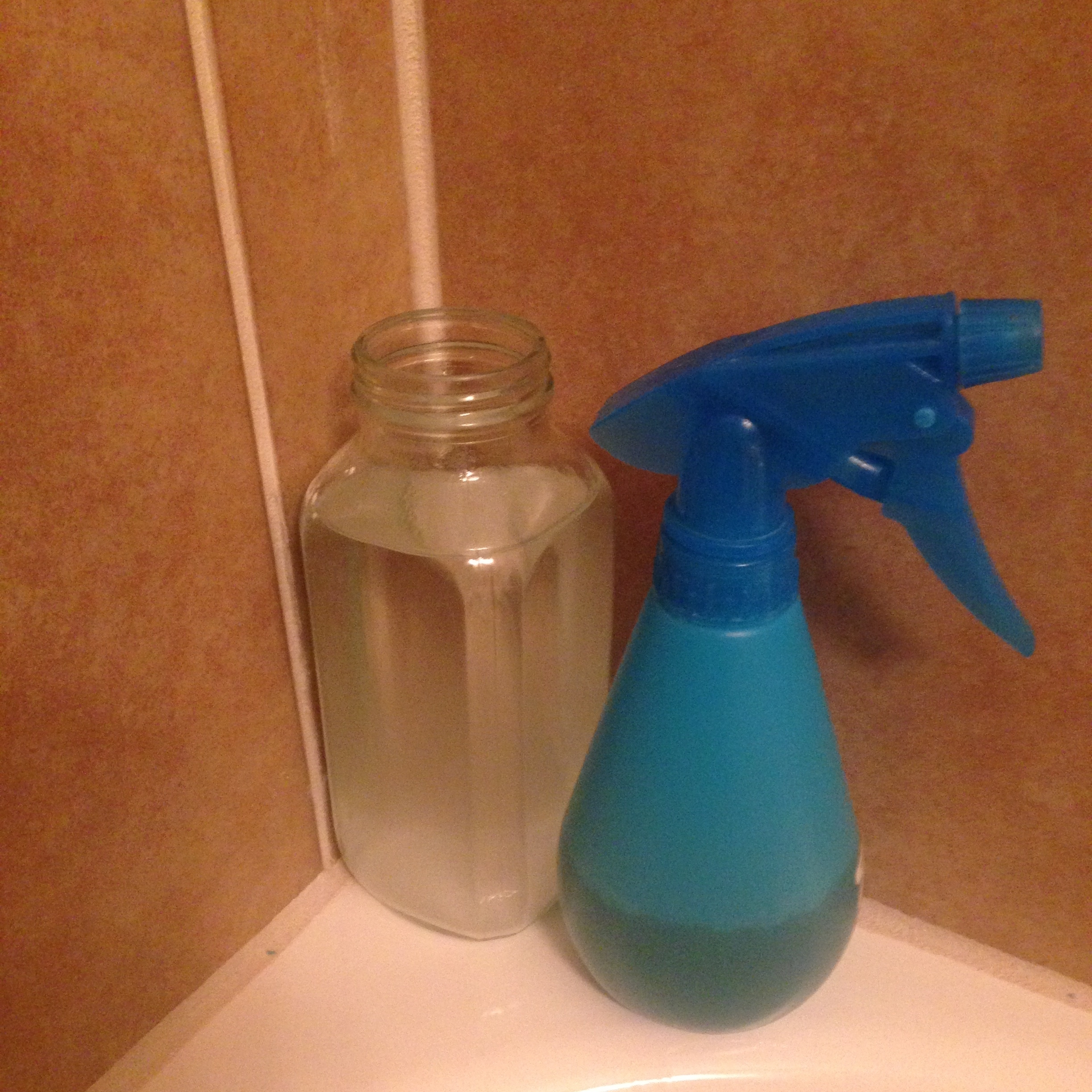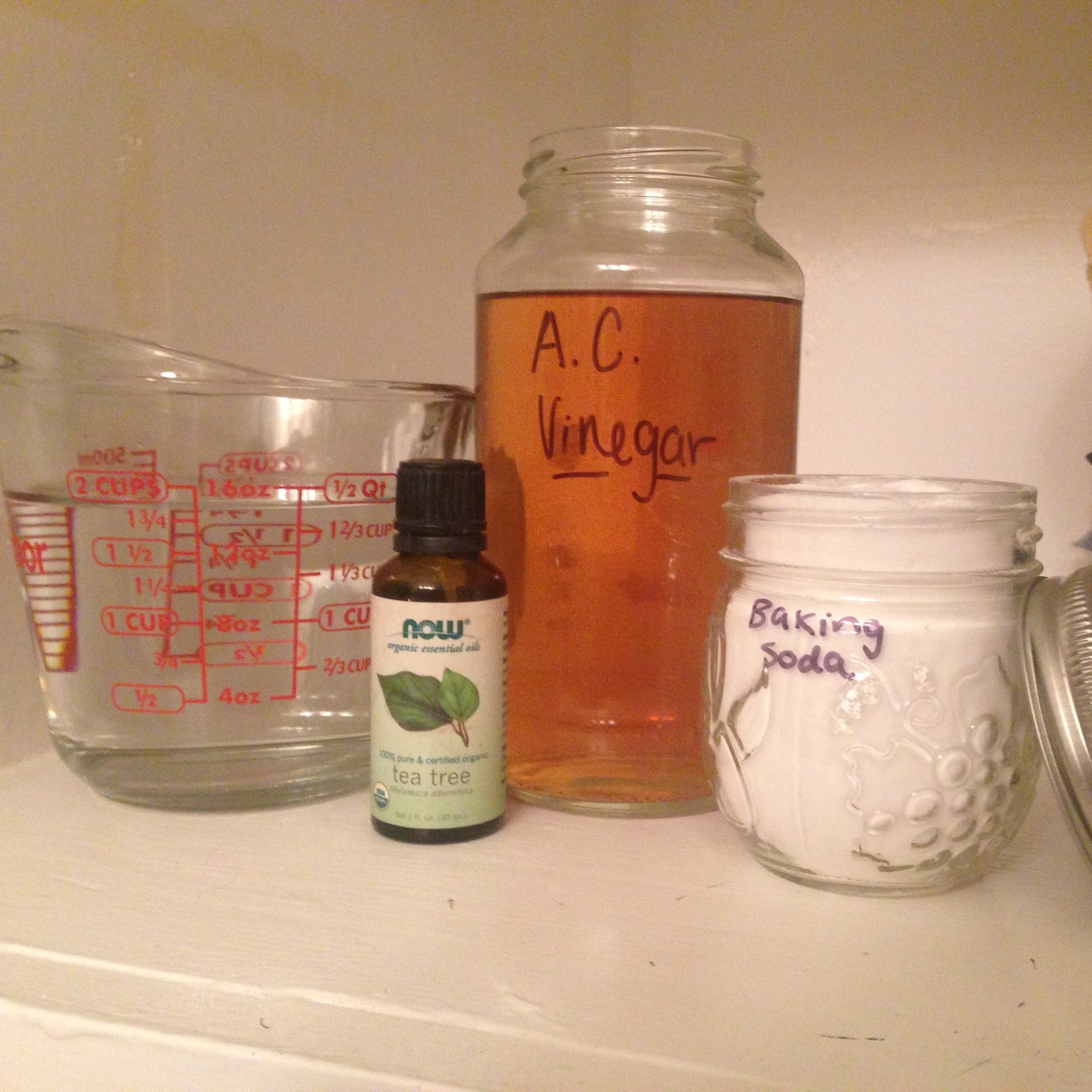You only need 3 ingredients for this DIY
- Baking soda
- Apple cider vinegar
- Water
- Essential oils (optional)
I have flip flopped for about the past five years between making my own shampoo and trying different natural ones. I am now committing to my homemade solutions, which I actually got the idea for from my grandma!
Grammy knows that I swing pretty natural and when I told her that I wanted to stop using traditional shampoo and conditioner she told me that back in in the 30's and 40's she and her sister used a baking soda rinse for shampoo and a vinegar rinse as conditioner.
This led to some experimenting, some of which turned my hair greasy, some of which made me have small flecks of baking soda in my hair all the time, and finally one combination that worked super well for me!
When I first transitioned I went cold turkey into new unexplored territory, but I would recommend transitioning into this regime by starting 1 day a week, then 2-3, etc. You may need to alter the proportions slightly depending on your hair type, but this is a great guideline to follow! I also find with this routine I rarely need to wash my hair more than 2-3 times a week, unless I am doing strenuous workouts every day (which is honestly, not all that often).
Not only are these recipes non-toxic and zero waste, but they are also SO much cheaper than buying the traditional stuff!
Baking Soda Shampoo
To Make: Mix about 3 Tbsp. of baking soda with 16 oz. of water. Add 10-15 drops of your preferred essential oils.
To Use: Shake up until water is foggy and all of the baking soda is mixed into the solution. Pour over hair in 1-3 rounds. Make sure you get it over most of your scalp, as this is where oil originates.
Vinegar Conditioner
To Make: Mix about 5 parts water to 1 part apple cider vinegar. Add 10-20 drops of your preferred essential oils.
To Use: Put solution in a small spray bottle. Shake before use. After your baking soda rinse, spray the vinegar solution onto the lower half of your hair, I pay special attention to my tips. Let sit for a few minutes and then rinse with water. No vinegar smell should cling to your hair.
Variations
These proportions work well for my hair which is combination to oily, very thick, and very long. If you have really oily hair you may want to increase the amount of baking soda. If you have very dry hair you may want to increase the proportion of vinegar, or spray the vinegar solution more liberally around all of your hair. I've read some suggestions to leave the vinegar in your hair, but I generally don't do this unless I'm doing some sort of treatment on it.
Good luck!
